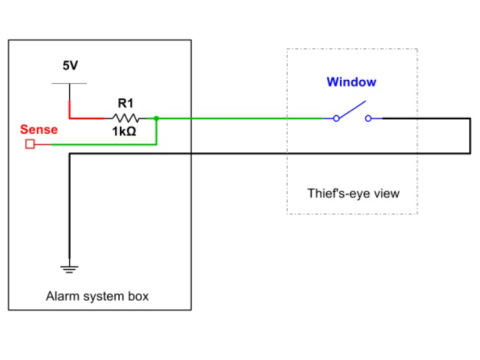Comprehensive Guide to Security System Loops
A security system loop (Шлейф охранной сигнализации, ШС) is an electrical circuit that includes:
- Detectors (sensors)
- Connecting wires
- End-of-line (EOL) resistors and other control devices
This guide provides an overview of the structure, types, and installation requirements of loops in security systems.
Understanding Security System Loops
In a wired security system, the loop is the foundation of communication between the control panel and sensors. The system continuously monitors the circuit's electrical current to detect:
- Normal operation (all components intact).
- Alarm conditions (sensor triggered).
- Faults (e.g., wiring issues or power failures).
Types of Security System Loops
1. Based on Connection Topology
- Radial (star topology): A straightforward connection where all sensors are wired in series (most common).
- Ring (loop topology): Sensors are wired in a circular configuration, often found in high-reliability or fire systems.
2. Based on Sensor Types
- Threshold loops: Trigger alarms based on significant changes in circuit resistance.
- Addressable loops: Digital systems where each sensor has a unique identifier for precise monitoring.
3. Active vs. Passive Loops
- Active: Sensors require a power source for operation (e.g., motion detectors).
- Passive: Operate without additional power (e.g., magnetic contacts).
Key Components of a Security Loop
- Control Panel (ПКП): Monitors the loop and triggers alerts for alarms or faults.
- End-of-Line (EOL) Resistor: Maintains a stable current in the loop, allowing the system to detect breaks or shorts.
- Sensors: Devices like motion detectors, magnetic contacts, and glass-break sensors.
- Power Supply: Powers active components and ensures system stability.
Installation Guidelines for Security Loops
Wiring Best Practices
- Separation from Power Lines: Maintain a minimum 50 cm distance between security wires and high-voltage power lines.
- Avoid Loose Wiring: Use conduits, cable trays, or mounting clips to secure wires.
- Hidden Installation: Conceal wiring in walls, ceilings, or conduits to prevent tampering.
Preventing Unauthorized Access
- Use tamper-resistant enclosures for junction boxes and control panels.
- Plomb (seal) or lock critical components like distribution boxes.
- Install loop supervision devices to detect tampering or disconnection.
End-of-Line Resistors
Place resistors at the furthest point from the control panel to ensure accurate loop monitoring. Match the resistor value specified in the system’s documentation.
Addressable Loops
Addressable systems transmit data digitally, allowing precise identification of activated sensors. Benefits include:
- Reduced wiring complexity.
- Easier system expansion.
- Enhanced diagnostic capabilities.
Maintenance and Troubleshooting
Routine Checks
- Verify loop continuity to detect breaks or shorts.
- Inspect connections for wear and secure fittings.
- Test all sensors regularly to ensure proper functionality.
Troubleshooting Tips
- If a loop shows constant faults, check for:
- Loose or corroded connections.
- Incorrectly installed EOL resistors.
- Physical damage to wiring or sensors.
Applications and Scenarios
Security system loops are versatile and can be adapted for various environments:
- Residential: Simplified configurations for homes and apartments.
- Commercial: Advanced loops with addressable sensors for offices and stores.
- High-security sites: Multi-loop setups for redundant protection in critical zones.
For more tailored solutions, explore advanced configurations at safsale.com

